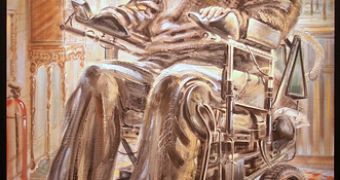A collaborative study by Professor Jonas Frisén's research group at Karolinska Institutet and their colleagues from France and Japan, has proven that stem cells along with other cells can repair damaged tissue in the mouse spinal cord.
Spinal cord injuries cause damage to nerve roots that carry signals to and from the brain and usually lead to paralysis.
Treatments are rather difficult and long, and usually focused on reducing the paralyzing effects of injury and stimulating regrowth of functional nerve fibers.
In most of the adult human nervous system there are cells that resemble stem cells, but until now it was rather uncertain how much they contribute to the formation of new cells in individuals.
This new study showed that stem cells as well as other cell types can contribute to the formation of new spinal cord cells in mice, and improve recovery chances, but they are unable to completely restore spinal cord functionality.
The kind of stem cells that the researchers identified, in the spinal cord is called an ependymal cell, and they are normally inactive in a healthy spinal cord, the little cell formation that goes on being mainly due to the division of mature cells.
Still, once the spinal cord is injured, these stem cells are activated and they become the new dominant source of cells.
They boost up the cells that form a scar tissue and those that form a kind of support, which is important for maintaining the functionality of the spinal cord.
Another discovery was a family of mature cells called astrocytes, that make large numbers of scar-forming cells after the injury.
Jonas Frisén said that “the stem cells have a certain positive effect following injury, but not enough for spinal cord functionality to be restored.
“One interesting question now is whether pharmaceutical compounds can be identified to stimulate the cells to form more support cells in order to improve functional recovery after a spinal trauma.”
These results could be crucial for the development of therapies for spinal cord injury, and they give hope that damage to the spinal cord and brain will one day be treatable using stem cells.
The study was published in Cell Stem Cell.

 14 DAY TRIAL //
14 DAY TRIAL //